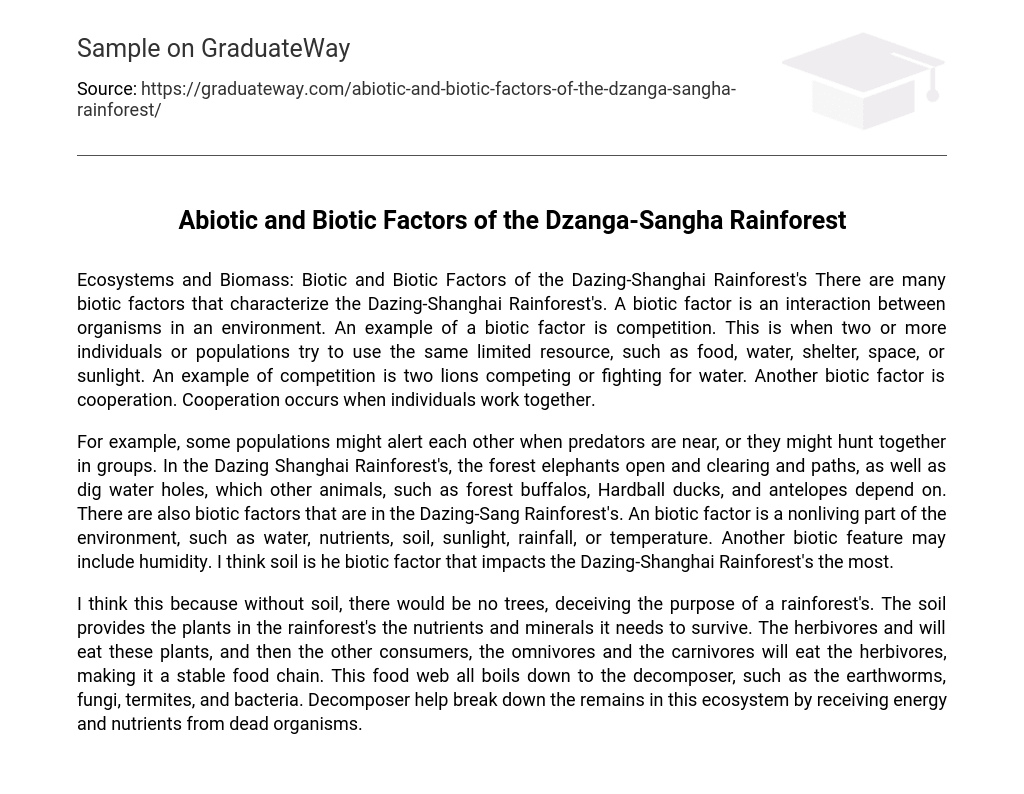Ecosystems and Biomass: Biotic and Biotic Factors of the Dazing-Shanghai Rainforest’s There are many biotic factors that characterize the Dazing-Shanghai Rainforest’s. A biotic factor is an interaction between organisms in an environment. An example of a biotic factor is competition. This is when two or more individuals or populations try to use the same limited resource, such as food, water, shelter, space, or sunlight. An example of competition is two lions competing or fighting for water. Another biotic factor is cooperation. Cooperation occurs when individuals work together.
For example, some populations might alert each other when predators are near, or they might hunt together in groups. In the Dazing Shanghai Rainforest’s, the forest elephants open and clearing and paths, as well as dig water holes, which other animals, such as forest buffalos, Hardball ducks, and antelopes depend on. There are also biotic factors that are in the Dazing-Sang Rainforest’s. An biotic factor is a nonliving part of the environment, such as water, nutrients, soil, sunlight, rainfall, or temperature. Another biotic feature may include humidity. I think soil is he biotic factor that impacts the Dazing-Shanghai Rainforest’s the most.
I think this because without soil, there would be no trees, deceiving the purpose of a rainforest’s. The soil provides the plants in the rainforest’s the nutrients and minerals it needs to survive. The herbivores and will eat these plants, and then the other consumers, the omnivores and the carnivores will eat the herbivores, making it a stable food chain. This food web all boils down to the decomposer, such as the earthworms, fungi, termites, and bacteria. Decomposer help break down the remains in this ecosystem by receiving energy and nutrients from dead organisms.





